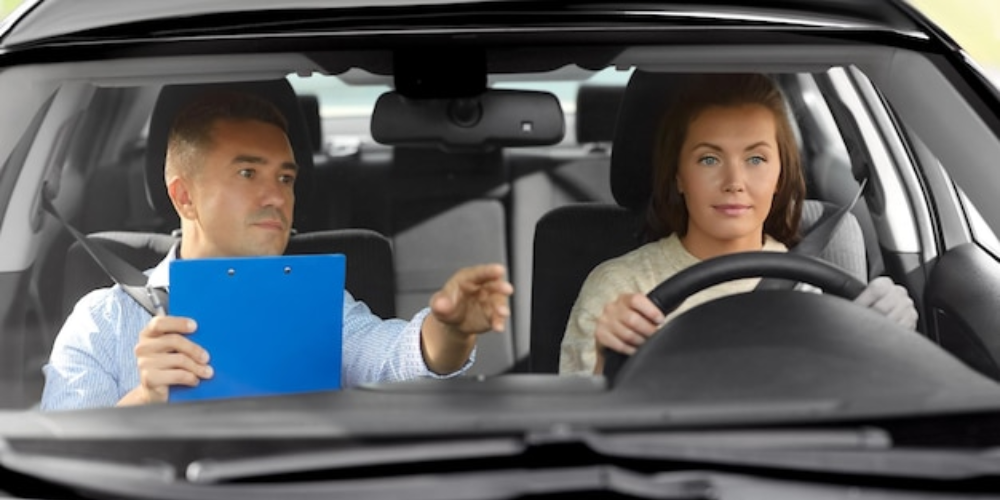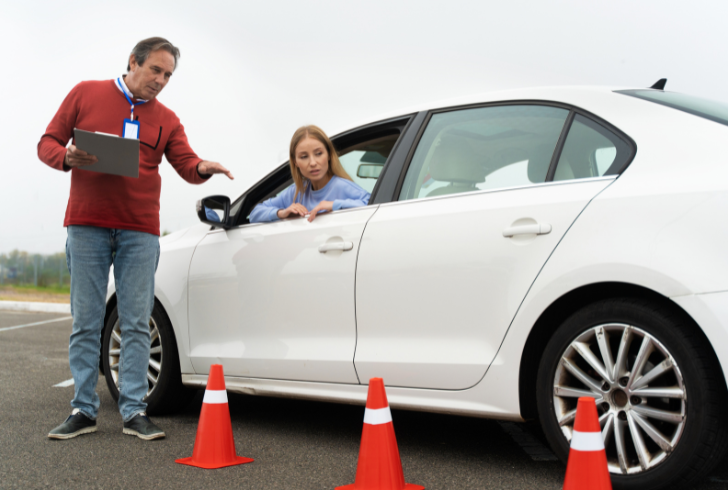
Adults in Ohio Face Stricter Rules to Obtain Driver’s License

Ohio has passed a new law that will change the way adults under 21 get their driver’s licenses. Signed into law in July, the update requires 18- to 20-year-olds to go through the same driver’s education process as teenagers under 18. This marks a major shift in how the state prepares its youngest drivers for the road.
Previously, adults 18 and older could bypass formal education and go straight to the test. Now, that fast-track option is going away—and many say the change could affect everything from family budgets to job opportunities.
Training Requirements for Adults Under 21

Freepik | Ohio drivers under 21 must complete full training before earning a license.
Under the new law, applicants between ages 18 and 20 will need to complete:
1. 24 hours of classroom instruction
2. 8 hours of in-car practice with a certified instructor
3. 50 hours of supervised driving with an adult 21 or older
Governor Mike DeWine emphasized safety as the key reason. “Too many people show up at 18 with no training, fail the test multiple times, and eventually pass,” he explained. “That’s not safe.”
Financial Pressure on Families
The law brings a cost many families weren’t expecting. Most driving schools in Ohio charge $400 or more for their full programs. That cost can climb even higher when factoring in time off work, transportation, and scheduling issues.
Gabe Crenshaw, a mother of three, said paying for training was a stretch. “It allowed my kids to get part-time jobs and gave us flexibility, but the cost added up fast,” she shared.
For those in rural or low-income communities, the problem gets worse. Many areas lack access to licensed driving schools. Without new resources, critics say this could widen the gap for those already facing barriers.
Concerns From Ohio’s Business Community
Tony Long, policy director for the Ohio Chamber of Commerce, raised concerns over how the law could hurt entry-level employment. Many young workers fill key roles in restaurants, retail, and seasonal industries. Without easy access to licensing, employers may struggle to find staff.
“Reliable transportation is already hard to come by,” Long said. “Now we’re asking young people to pay hundreds of dollars just to be eligible for basic jobs.”
He added that in places without public transit, a driver’s license is often the only way to reach a job site. Losing that access can quickly become a barrier to employment.
A Push to Reintroduce Driver’s Ed in Schools

Instagram | @hillsboroilschools | Young drivers in Ohio may train inside schools if funding and plans align.
To ease the burden, Governor DeWine proposed returning driver’s education to public high schools. Although lawmakers withdrew that provision from the final budget, DeWine remains dedicated to the concept.
“Providing training through schools just makes sense,” he said. Crenshaw and Long both support that approach. If the state wants more young people trained, they argue, it should also provide affordable ways to do it.
The law officially takes effect at the end of September.
Ohio’s licensing update pushes for safer roads, but it also places added pressure on families, students, and entry-level workers. As the September deadline approaches, the challenge will be ensuring that every new driver has access to the training they now legally need.
With community support and policy alignment, this law could deliver real benefits without limiting opportunity.
More inDriving
-
`
Gen Z Craves Career Guidance, But Their Parents Are Struggling Too
Gen Z is stepping into the future with curiosity and ambition—but they’re not doing it alone. A growing number of teens...
July 25, 2025 -
`
Do Car Insurance Companies Offer Pay-As-You-Go Plans?
Car insurance premiums often feel unfair to people who rarely drive. Yet, most traditional auto policies still charge a fixed monthly...
July 17, 2025 -
`
Why the Koenigsegg Sadair Spear Is the Ultimate Hypercar Beast
Koenigsegg has revealed a new beast—the Sadair’s Spear. Tuning its focus on raw performance and brutal speed, this hypercar marks the...
July 11, 2025 -
`
Which States Have the Safest—and Riskiest—Drivers in America?
Driving safety isn’t just about skill. It’s also about location. A recent nationwide report shines a spotlight on where drivers are...
July 4, 2025 -
`
How to Save on Tesla Car Insurance Without Compromising Coverage
Owning a Tesla often brings savings on fuel and a futuristic driving experience, but the conversation changes quickly when it comes...
June 26, 2025 -
`
10 Weird Cars That Turned Heads and Won Hearts
Some cars turn heads with speed, others with luxury—but a rare few grab your attention simply by being delightfully strange. From...
June 20, 2025 -
`
Next-Gen Jeep Cherokee Expected to Arrive by Late 2025
After a break of two years, Jeep is prepared to relaunch the Cherokee brand. The automaker confirmed the return with fresh...
June 12, 2025 -
`
9 Tips to Make Night Driving Safer and Less Frightening
Once the sun dips below the horizon, driving becomes more than just a commute—it becomes a challenge. Limited visibility, harsh glares,...
June 6, 2025 -
`
The Impact of AI on Middle Management and Leadership Dynamics
Artificial intelligence is reshaping modern management practices. While intended to streamline tasks like approving time off or managing internal applications, its...
May 31, 2025















You must be logged in to post a comment Login